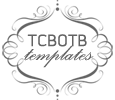Today, we are
going to read, A Bad Case of Stripes. Based on the title and cover of
the book, raise your hand and tell me what you think the book will be about.
1. Why do you think Camilla Cream was afraid to have people find
out that she liked Lima Beans? Was she right?
2. Do you think the students in the story were bullying Camilla?
Why or why not?
3. What do you think the author is trying to say to the reader?
Maybe David Shannon is trying to tell us to be ourselves. Camilla tried very hard to be like everyone else and she wasn’t
being true to herself. Imagine what the world would be like if we were all the
same.
This is a Cause
and Effect Anchor chart. Cause is the reason or why something happened. Effect
is the result or what happened. For example, it rained and I had to use an
umbrella. It rained is the cause. I had to use an umbrella is the effect. As
you read you can be a detective. You can look for key or signal words such as
if, then, because, since, so, this is why, consequently, and therefore. Often
cause and effect relationships are signaled by these words and phrases.
Everything in life has a
cause and an effect. You study for a test you get a good grade. You forget your
umbrella when it rains, you get wet. You break a rule you have a consequence.
We are going to take a
minute to recall parts of our story. Raise your hand if you can tell me the
name of the main character our story? That’s right, her name is Camilla Cream. The
problem is something that a character in the story wants to change, fix or
figure out. Raise your hand if you can tell me, what is the problem? Good! Solution
is the way a problem is solved or fixed. We said the problem was a bad case of
stripes. Raise your hand if you can tell me the solution to the problem. Give
me a thumbs up if you agree.
I have some cards of
events from the story. One card is the cause and one card is the effect. It is
your job to raise your hand and tell me which card is which. Cause is the
reason or why something happened. Effect is the result of what happened. For
example, She is covered in stripes. Camilla screams. She is covered in stripes
is the cause. Camilla screams is the effect. (Go through cards)
Cause and effect is a
hard concept but 3rd graders, you did a great job!
For our activity, we are
going to write a summary. A summary is a short description of the most
important events in a story. A summary tells what happens. A summary answers
the questions who what, where, when, why, and how. You are going to write a
summary of the book A Bad Case of Stripes. Your summary needs to be a
minimum of 3 sentences and you need to use at least two signal/key words. If,
then, because, since, so, this is why, consequently, and therefore are key or
signal words. Can you write more than 3 sentences? Yes and I hope that you do!
Can you use more than 2 signal/key words? Yes! Are there any questions about
the summary?
When you are done
writing, I want you to raise your hand so I can check it. I want this to be
your best work. Once I have looked at your writing, you will come to the front
of the classroom and pick up three pieces of paper- label, Camilla’s face, hair
and bow. I want you to color Camilla. You can have fun and be creative with
this. Camilla can be striped, covered in stars, or in camouflage. It’s up to
you but it needs to be school appropriate- no blood, no weapons. When you are
done coloring, cut all your pieces out. You will need to get a bigger piece of
construction paper. You will glue Camilla and your summary onto the construction
paper. Are there any questions about our activity?
I need two volunteers to
pass out writing paper. Remember, I want you to do your writing first and I
want to see what you wrote before you move on to coloring Camilla.
Below are student artifacts, my anchor chart, and matching cards.
 |
| This has probably been my favorite anchor chart so far. |
 |
| Cause and Effect cards. |
 |
| My example. Thank you, Step Into 2nd Grade for the wonderful templates! |
 |
| I have a student who is blind in my class and although I cannot read what she typed she told me and I trust her. :-) |
 |
| We have been practicing our cursive! |
 |
| We were running short on time so not all kids had the opportunity to color Camilla Cream. I am learning cutting, coloring, and gluing ALWAYS takes at least twice as long as I plan for. |
 |
| So proud of this kiddo! |
 |
| Camilla is a Lion- LOVE the creativity! |
 |
| If I teach this lesson again I am going to have every student circle their two key/signal words. That was incredibly helpful when I was doing assessments. |
 |
| Her handwriting looks like it could be straight from a handwriting workbook! |



